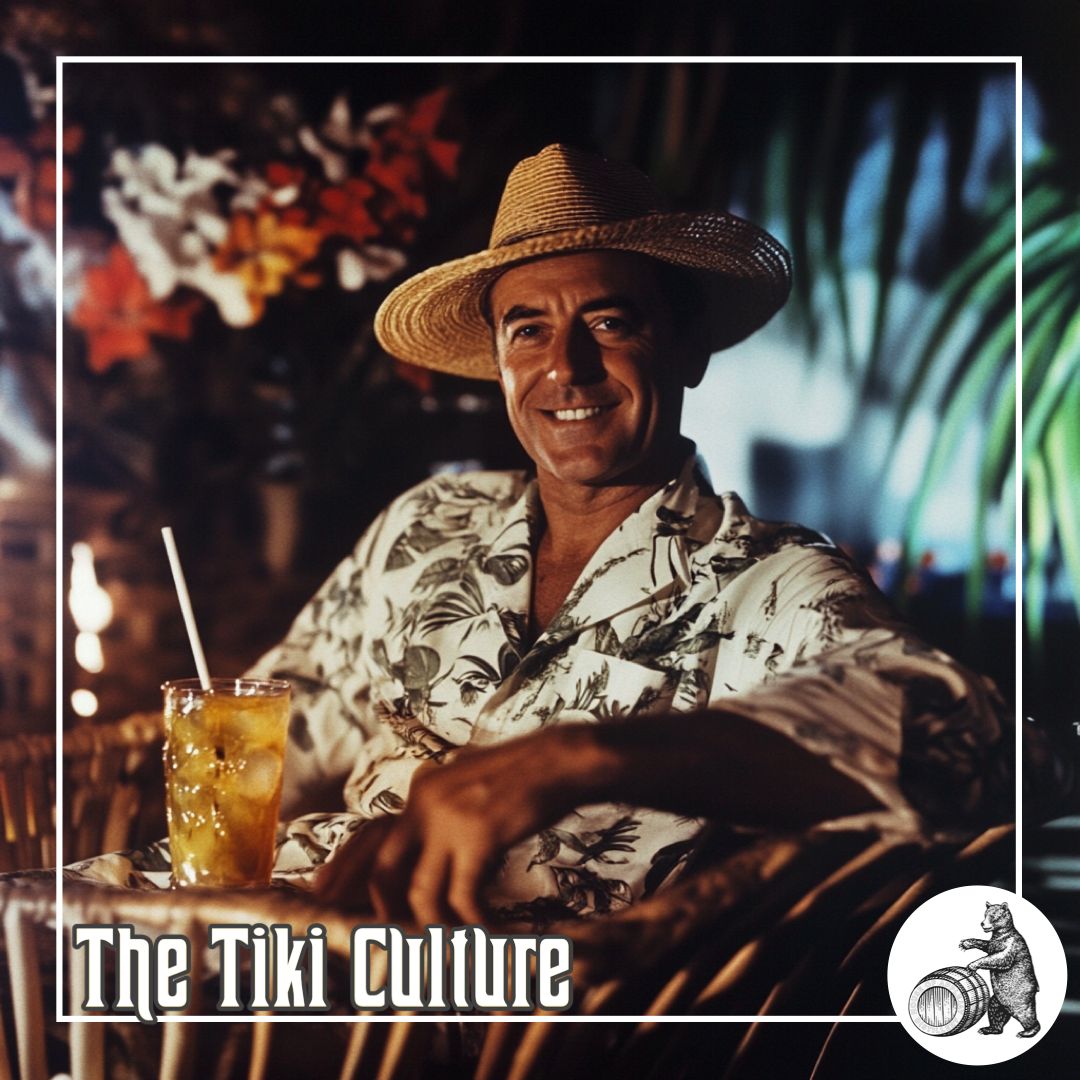The Tiki Culture
The Origins of Tiki Culture & Its Prohibition-Era Roots
Tiki culture evokes images of tropical drinks adorned with tiny paper umbrellas, carved wooden idols, and a laid-back, escapist atmosphere. Behind the rum-fueled revelry lies a history deeply connected with the Prohibition era and post-World War II America. This culture emerged, evolved, and left a significant impact on the world of cocktails and pop culture.
The Seeds of Tiki: An American Story Born of Prohibition
The roots of tiki culture can be traced back to the Prohibition era in the United States (1920-1933), when the production, sale, and transportation of alcohol were forbidden. Speakeasies thrived in secrecy, and bartenders had to be inventive with limited and often low-quality ingredients. Many employed syrups, juices, and exotic spices to mask the harshness of substandard alcohol, setting the stage for tiki’s distinct style.
The true birth of tiki as a cultural phenomenon occurred post-Prohibition, in the 1930s. Two influential figures, Ernest Raymond Beaumont Gantt (better known as Donn Beach or Don the Beachcomber) and Victor Jules Bergeron Jr. (known as Trader Vic), played crucial roles in shaping the tiki scene.
The Origin of the Word “Tiki” and Design Elements
The word “tiki” originates from Polynesian mythology, where Tiki is regarded as the first man created by the gods. In Polynesian cultures, tiki figures hold spiritual importance, symbolizing protection, fertility, and a connection to the divine.
Tiki culture’s design elements draw heavily from these mythological roots, incorporating carved wooden statues, masks, and totems depicting ancestral figures and deities. Natural materials such as bamboo and rattan create the signature ambiance, complemented by motifs like palm fronds, exotic flowers, and nautical elements such as ropes and fishing nets. These elements evoke a sense of tropical adventure and mystery.
Don the Beachcomber: The Pioneer of the Tiki Bar
Donn Beach opened his first tiki bar, Don the Beachcomber, in Los Angeles in 1933, right after Prohibition ended. Inspired by his travels in the Caribbean and South Pacific, Beach’s establishment was a dimly lit paradise filled with Polynesian décor, bamboo furnishings, and exotic totems. His cocktail menu featured rum-based drinks combined with juices, syrups, and spices in innovative ways—many of which he created, including the iconic Zombie and Navy Grog.
These drinks were designed to transport patrons to a mythical tropical world, far removed from the harsh realities of the Great Depression. Beach’s clever use of rum—a spirit with deep colonial and maritime roots—solidified it as the centerpiece of tiki cocktails.
Trader Vic and the Expansion of the Tiki Craze
Trader Vic’s opened in Oakland, California, in 1934. Vic’s approach to tiki culture blended culinary innovation with exotic cocktails, and he is often credited with popularizing the Mai Tai, sparking a rivalry over its origin with Donn Beach.
Victor Bergeron’s tiki restaurants evolved into upscale dining experiences, featuring tropical dishes inspired by Chinese, Polynesian, and American cuisine. As World War II ended and soldiers returned from the Pacific with stories of island paradises, tiki culture’s allure grew.
Tiki’s Golden Age
The 1950s and 1960s marked the height of tiki’s popularity in America. Restaurants and bars embraced the trend, serving rum-based drinks in coconut-shaped mugs and carved moai figures. Venues showcased elaborate décor, including waterfalls, thatched roofs, flaming torches, and tribal masks.
This post-war era, marked by economic prosperity and a desire for escapism, provided fertile ground for tiki culture. Americans craved novelty and adventure, and tiki offered a romanticized version of the exotic.
The Decline and Modern Revival
By the 1970s, tiki culture began to wane as public tastes shifted, modern minimalism took hold, and drinking habits changed. Tiki bars became seen as kitschy relics of the past.
In recent years, tiki has seen a revival. Craft cocktail enthusiasts and historians have rediscovered authentic recipes, high-quality ingredients, and the culture’s vibrant heritage. Today’s revival celebrates the creativity and storytelling that Donn Beach and Trader Vic championed, while striving to honor the South Pacific cultures that inspired it.
Tiki culture emerged as a response to a world seeking an escape. During the Great Depression and the uncertain post-war years, the exotic South Sea tiki décor provided a refuge, allowing people to step away from everyday problems and immerse themselves in an idyllic world—a world where each drink told a story and promised a brief, adventurous reprieve. Tiki cocktails symbolize more than just unique flavors; they embody resilience, creativity, and the timeless human desire for moments of joy in challenging times. Each Mai Tai or Zombie raised is a tribute to the art of crafting a dream in a glass.
The Distilling Culture
BLOG
Embark on a global journey, and you’ll find that cultures possess tales that harken back to their ancient beginnings of distillation, brewing, and winemaking.
info@houseofapplejay.com
67 Fowler St, Bldg B, East Ellijay, GA 30540

